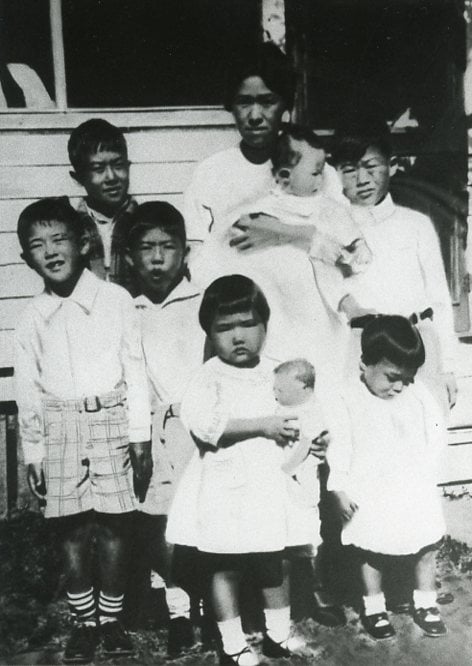December 7, 1941. A day that lives in infamy.
The invasion of Pearl Harbor and the World War that followed forever changed the nation and the city of St. Petersburg. More than 120,000 soldiers would spend time training here, and many later returned to call St. Petersburg home. Post-war technological advances would spur a building boom that increased St. Petersburg’s population by 87% in the 1950s, when some 47,000 houses were built in the city. Social, political, and economic conditions for women and African-American citizens would change drastically, too.
There is another population of St. Petersburg that was greatly impacted by the attack on Pearl Harbor; one that is often overlooked in the story of that terrible day.
St. Petersburg’s Japanese Citizens
The day of the Pearl Harbor attack, there were 14 people of Japanese descent living in St. Petersburg; most of them born in Japan. Legally barred from obtaining U.S. citizenship because of nationality laws from 1790 and 1870, this small, tight-knit community had lived in St. Petersburg for decades. They worked in a variety of occupations, from truck farming to owning a popular gift shop and restaurant. They were stunned by the attack on Pearl Harbor.
Many of these Japanese-American residents rushed to enlist along with their American-born peers. The St. Petersburg Times reported that Taizo Sone, the owner of the wildly popular “Sone’s Unusual Gifts” on First Avenue N, “was among the first to register and he appeared more eager—if that were possible—than the native born.” (While Sone was too old to fight, he would have been well prepared: He was a world-class Judo practitioner and became a renowned Judo instructor after the war.)
Decorated Soldiers
Three other Japanese-Americans who were young enough to fight came from the Kimura family, who had settled in St. Petersburg in 1923, becoming well-known farmers in the Goose Pond area (swampy land in the middle of the city that was later filled and converted into the Central Plaza shopping center in 1953).
Earl, Herbert, and Eugene Kimura served in the segregated Japanese-American unit of the 100th Infantry Battalion/442nd Regimental Combat Team, known as the “Go For Broke” unit. Herbert earned a combat infantry badge in 1945 after a battle in Italy, Eugene was decorated with three Bronze Stars, and all of the brothers were awarded (some posthumously) the Congressional Gold Medal, given collectively to the 100th/442nd in 2011 for exemplary service during the war. It remains the most decorated unit for its size and length of service in the history of the U.S. military.
Suspicion and Discrimination
The Kimuras served their country in the face of palpable discrimination at home. Soon after the Pearl Harbor attack, President Franklin Delano Roosevelt signed an executive order that led to the internment of more than 100,000 Japanese-Americans in camps on the West Coast. Nationwide, fear and suspicion of Japanese residents led to increased scrutiny of their businesses and personal lives.
In St. Petersburg, on Dec. 9, just two days after the invasion of Pearl Harbor, Sone’s Unusual Gifts and the popular Nikko Inn Japanese restaurant near the Ponce de Leon Hotel on Central Avenue were raided by local police under what they called the “trade emergency act of Congress.” Cash was seized from both businesses and the doors padlocked. They were allowed to reopen only under tight supervision.
The intense scrutiny following the raid on the Nikko Inn led to an audit and eventual tax evasion charges for the restaurant’s owners, who were convicted in 1943. Both men served a year in prison, and one was held in a Japanese Internment camp in Arkansas for the duration of the war. The other, Shinyu Noro, later returned to St. Petersburg and lived a long life with his wife, Iso Noro, a beloved figure in the city, famous for her performances of traditional Japanese dance. In later newspaper interviews, Iso spoke lovingly of her adopted country and St. Petersburg, never mentioning the difficult war years.
An American Citizen at Last
Likewise, Sangore Hatanka, a resident of St. Petersburg since 1935, was eager to embrace his adopted country when revised naturalization laws allowed him to do so. Originally a produce farmer in the Goose Pond, Hatanka later owned a yarn store in the same building as Sone’s Gift Shop. (Sone purchased the entire building at 240 First Ave. N after the war.) In 1953, Hatanka proudly boasted that he was the first Japanese-born person to become an American citizen since 1850. Or so he thought. When a newspaper reporter called the immigration office to confirm this statistic, they learned a Seattle resident had attained citizenship a few months earlier.
The experiences of St. Petersburg’s Japanese-American families during World War II are just one glimpse of the sacrifices that Americans made. In the face of suspicion and wartime fear, St. Petersburg’s Japanese residents grew Victory Gardens, bought war bonds, and sent their sons to fight with patriotism equal to that of their neighbors. In the post-war years, they continued to have prominent connections in the growing city. At age 92, and getting frail, Iso Noro reluctantly returned to Japan in 1990 to live with her son. As she departed she told the St. Petersburg Times, “This is the best country in the world. Maybe you don’t know.”



